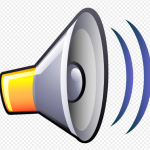Most of us have one, and most of us do it – we use our computers, iPhones, tablets, and other devices until right before sleep. Heck, most of us bring them into the bedroom with us (it’s our alarm clock too, right?). If you are a person who struggles to get to sleep, rethink your actions – the blue light emitted from these devices may be making it harder for you to fall asleep.
Blue light is part of the spectrum of normal light, and it’s abundantly emitted from the screen of your computer and your portable device. Blue light stimulates a special sensor in our eyes called melanopsin, which is thought to regulate our sense of night and day by affecting levels of melatonin (a sleep hormone) in our brains. When we see blue light, melanopsin is stimulated, which suppresses melatonin levels, effectively telling our brains that it is daytime and not the time to sleep. So, if you’re using your electronic device before bed, it may take a while after you shut it off for your brain to realize it’s night time and fall asleep.
The makers of these devices are hard at work to develop features that limit the amount of blue light emitted from screens at night. For iPad and iPhone users, you can dim the screen in the Settings menu, which helps to decrease the overall (and therefore also the blue) light emitted. There are also funky orange tinted glasses and screen filters available out there that help to decrease the amount of blue light you see, and even computer software that can be installed to decrease the amount of blue light coming from your screen.
Knowing that sleep deprivation increases the risk of obesity, here’s one more item we can add to the long list of contributors to weight struggles in modern society.
Not to mention that reading those palpitation-inducing work emails right before bed probably isn’t the best idea, either. 🙂
Dr Sue Pedersen www.drsue.ca © 2012 drsuetalks@gmail.com
Follow me on Twitter for daily tips! @drsuepedersen












